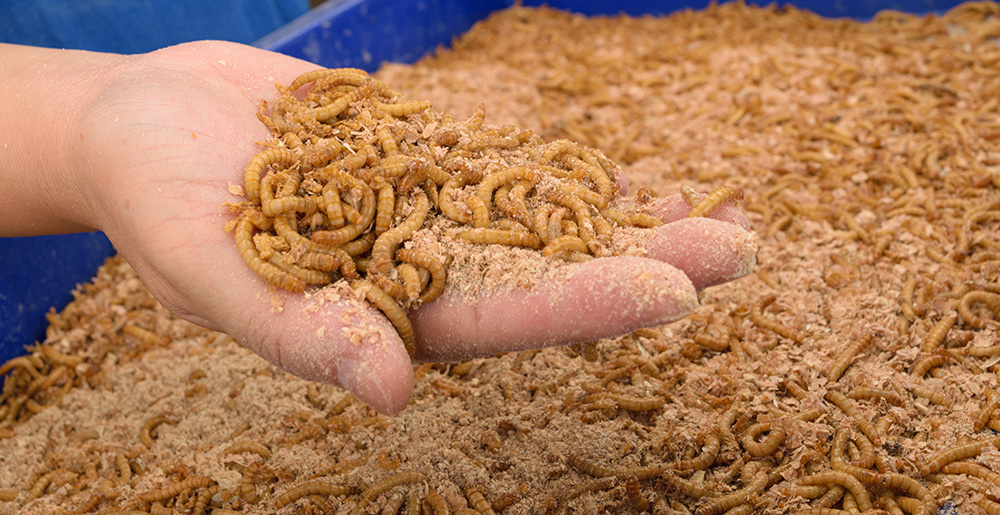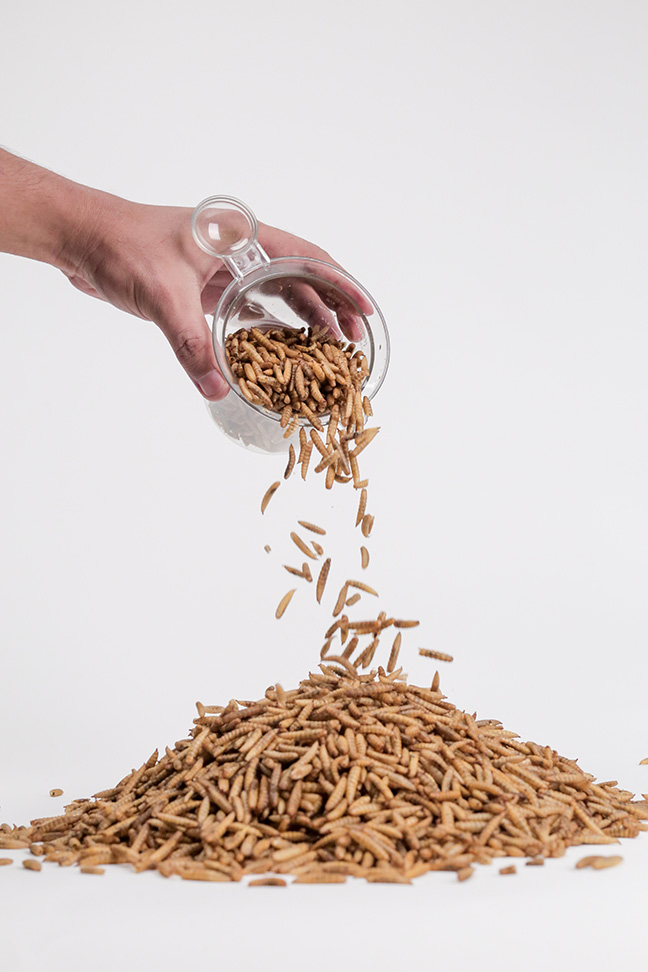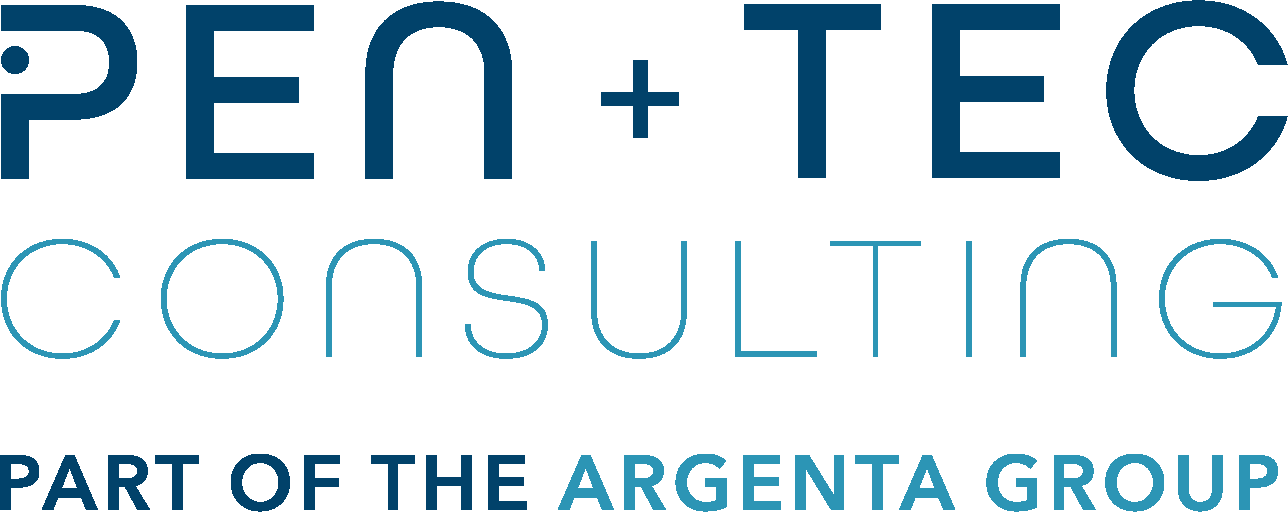Alternative Proteins in animal feeds – how regulatory affairs can assist in a better ROI for your product
Posted 28 April, 2023
Alternative proteins in animal nutrition refer to non-traditional sources of protein that can be used to replace or supplement conventional protein sources like soybean meal, fishmeal, and meat and bone meal. In recent years, there has been growing interest in alternative proteins due to concerns around the sustainability and environmental impact of conventional protein sources, as well as the need to find new sources of protein to meet the increasing demand for animal protein in a growing global population. Alternative proteins have the potential to reduce the reliance on land-intensive and resource-intensive protein sources, while also offering new options for formulating animal diets that meet nutritional requirements and support animal health and performance.

Below are some examples of alternative proteins used in animal feeds:
- Insects: Insect meal, which is made from insects such as black soldier fly larvae, mealworms, and crickets, is a highly sustainable protein source that is being used in poultry, fish, and pig feed.
- Algae: Algae meal is a protein-rich alternative to fish meal that is being used in fish and shrimp feed.
- Single-cell protein: Single-cell protein (SCP), which is made from microorganisms like bacteria, yeast, and fungi, is a highly digestible protein source that can be used in a range of animal feeds.
- Pea protein: Pea protein is a plant-based protein that is being used in pet food and livestock feed as an alternative to soy and other plant-based proteins.
- In vitro meat: In vitro meat, which is produced by culturing animal cells in a lab, is a highly sustainable protein source that could potentially be used in animal feed in the future.*
*It must be stated that in vitro/cultured meat has not yet been approved for use in the EU or US, nor has any company upscaled to sufficiently supply in commercial quantities.
Regulatory requirements for alternative proteins in the European Union and the United States
In the EU, products used as protein sources in animal feeds generally qualify as feed materials, which are defined as “products of vegetable or animal origin, whose principal purpose is to meet animals’ nutritional needs, in their natural state, fresh or preserved, and products derived from the industrial processing thereof, and organic or inorganic substances, whether or not containing feed additives, which are intended for use in oral animal-feeding either directly as such, or after processing, or in the preparation of compound feed, or as carrier of premixtures”.

Key regulations on feed materials are Regulation (EC) No 767/20091 (“the Feed regulation”) and Regulation (EU) No 68/20132 (the Community Catalogue of feed materials, “the Catalogue”). The Feed regulation lays down rules for the placing on the market and use of feed, including feed materials such as alternative proteins. It also establishes the creation of the Catalogue, a positive and non-exhaustive list of feed materials and manufacturing processes that can be used for feed materials. As EU feed materials, alternative proteins can be marketed and used if they are safe, and they do not have a direct adverse effect on the environment or animal welfare. Products not listed or not covered by entries of the Community Catalogue must be notified in the EU Online Register of Feed Materials before they are marketed3. Some alternative proteins may require a pre-market safety evaluation by EFSA (the European Food Safety Authority) depending on their production process, characteristics and/or composition. In addition, further regulations must be considered for certain products. For example, alternative proteins that are derived from genetically modified organisms (GMOs) must also comply with EU regulations on GMOs, including labelling requirements. Processed proteins derived from insects may only be obtained from insect species specified in Regulation (EU) 142/20114 and cannot be used in feeds for ruminant species due to EU “feed ban rules”. Overall, the regulatory framework in the EU aims to ensure that alternative proteins used in animal feeds are safe and of high quality, while also supporting the development of new and innovative sources of protein for sustainable animal nutrition. Table 1 below gives a brief overview of the approved use of insects as alternative protein sources in the EU.
| Insect Proteins | Insects Fats | Whole insects (untreated) | Whole insects (treated) | Live insects | Hydrolised insect proteins | |
| Ruminants | X | √ | X | X | X | √ |
| Poultry | √ | √ | X | X | √ | √ |
| Pigs | √ | √ | X | X | √ | √ |
| Aquaculture | √* | √ | X | X | √ | √ |
| Pets | √* | √ | √ | √ | √ | √ |
Table 1: Target species allowed raw material of insect origin in their diet within the EU5
*Approval as of 7 September 2021
In the US, there are several pathways to achieve approval as a new animal food ingredient regulated by the Food and Drug Administration (FDA), specifically by the FDA’s Centre for Veterinary Medicine (CVM). In general, alternative proteins, particularly those produced by more modern technologies, follow the FDA-approved Generally Recognized as Safe (GRAS) route given that sufficient data to support the safety of the ingredient is available in peer-reviewed and published literature. For this pathway, a dossier containing the relevant data on the identity and safety of the ingredient is submitted to FDA for review. If the notification is successful, FDA will issues a “no-questions” letter resulting in the listing of the ingredient and GRAS notice to the Animal Food GRAS Notices Inventory6. Once an alternative protein has been approved by the FDA for use in animal feed, it can be legally marketed and sold to farmers and other animal producers. FDA encourages applicant companies to engage in discussion with them at the early stages of dossier compilation and submission to discuss the most suitable regulatory route and relevant data requirements. It is important for companies to work with regulatory affairs consultancies for the preparation of such discussions and to ensure that their alternative protein ingredients are properly evaluated and meet FDA regulatory requirements before entering the market.

The Association of American Feed Control Officials (AAFCO) in the US has voted to allow Black soldier fly (Hermetia illucens) larvae to be used in adult dog food. No other approvals for the use of insects as a source of protein in animal feeds currently exists in the US.
Regulatory Affairs and how it can assist your business
Regulatory Affairs plays a crucial role in ensuring the safety and efficacy of alternative proteins used in animal feeds. The use of these alternative proteins is subject to strict regulations, which are designed to protect animal health, food safety, and the environment. Regulatory Affairs professionals are responsible for navigating these complex regulatory frameworks and ensuring that products comply with all relevant laws and guidelines. By ensuring that alternative proteins used in animal feeds meet these requirements, regulatory affairs help to safeguard the health of animals and humans, while also supporting the growth of a sustainable and ethical food system.
A regulatory affairs consultancy can provide valuable support to companies involved in the production or use of alternative proteins by helping them navigate the complex regulatory landscape. Regulatory affairs consultants have expertise in the regulations governing alternative proteins in different jurisdictions, depending on where these ingredients are intended to be used. They can assist companies in developing and implementing regulatory strategies that ensure compliance with all relevant laws and guidelines. This can involve conducting regulatory assessments of alternative proteins, preparing, and submitting regulatory applications, and providing ongoing support to ensure ongoing compliance. Regulatory affairs consultants can also help companies stay up to date with the latest regulatory developments and anticipate changes that may impact their business.
The return on investment (ROI) for working with a regulatory affairs consultancy to assist with alternative proteins can be significant. By ensuring compliance with all relevant regulations and guidelines, companies can avoid costly penalties, delays, or even product recalls. Regulatory compliance can also help companies establish a reputation for safety, quality, and environmental responsibility, which can be a key differentiator in the marketplace. Additionally, regulatory affairs consultants can help companies streamline their regulatory processes, which can reduce costs and improve efficiency. Finally, by staying up to date with the latest regulatory developments, companies can better anticipate changes that may impact their business and proactively adjust their strategies, thereby improving their chances for long-term success. Ultimately, by investing in regulatory affairs consultancy services, companies can protect their brand, reduce risk, and position themselves for growth and profitability in the alternative protein market.
Conclusion
It’s important to understand the regulatory requirements in the EU and the US to ensure that your products are safe and comply with all laws and guidelines. Hiring a regulatory affairs consultant can be highly beneficial in navigating the complex regulatory landscape and can save your company time and resources. By working with a regulatory affairs consultant, you can ensure that your products meet all necessary requirements, support animal health and performance, and contribute to a more sustainable and ethical food system. Products will go from concept to market in the most efficient and timely manner, ensuring that the company remains profitable and innovative.
References
- https://eur-lex.europa.eu/LexUriServ/LexUriServ.do?uri=OJ:L:2009:229:0001:0028:EN:PDF
- https://eur-lex.europa.eu/legal-content/EN/ALL/?uri=CELEX%3A32013R0068
- https://www.feedmaterialsregister.eu/register (online register published by the representatives of the European feed business sectors referred to in Article 26(1) of the Feed regulation)
- https://eur-lex.europa.eu/legal-content/EN/TXT/?uri=celex%3A32011R0142
- https://ipiff.org/insects-eu-legislation/
- https://www.fda.gov/animal-veterinary/generally-recognized-safe-gras-notification-program/current-animal-food-gras-notices-inventory
 ByDawn Botha, Technical Marketing Manager, Pen & Tec Consulting as part of the Argenta Group
ByDawn Botha, Technical Marketing Manager, Pen & Tec Consulting as part of the Argenta Group
